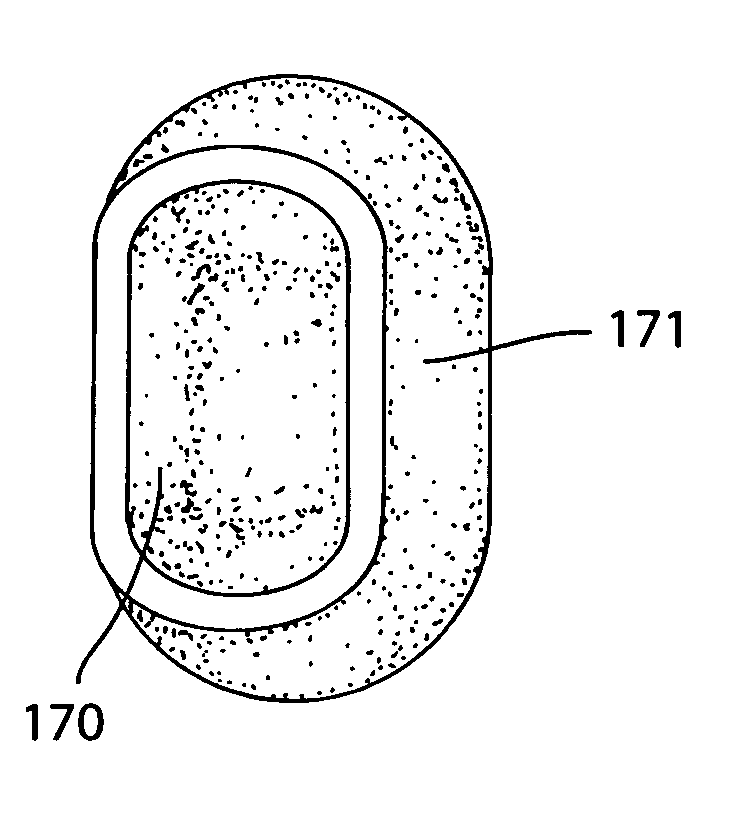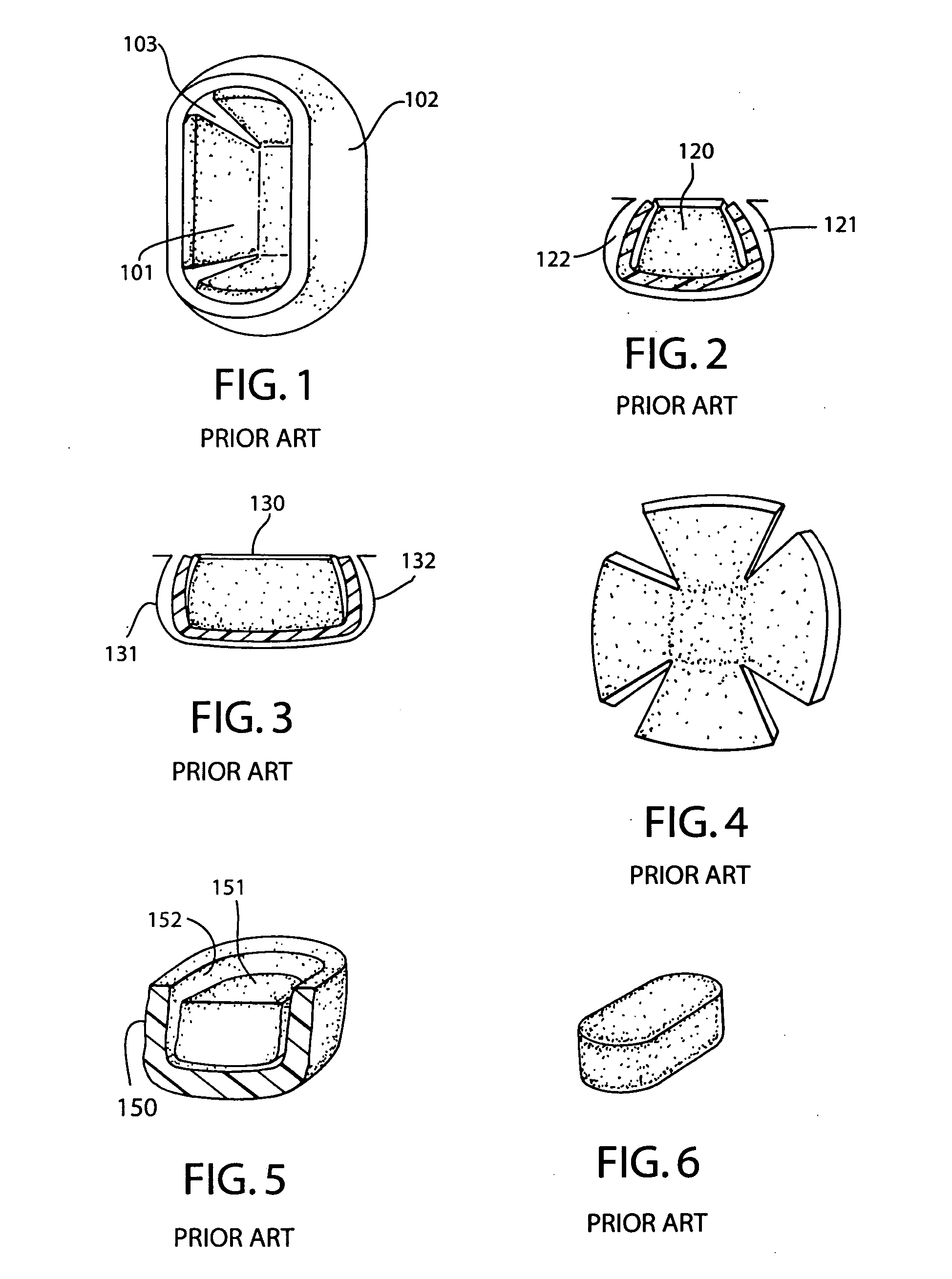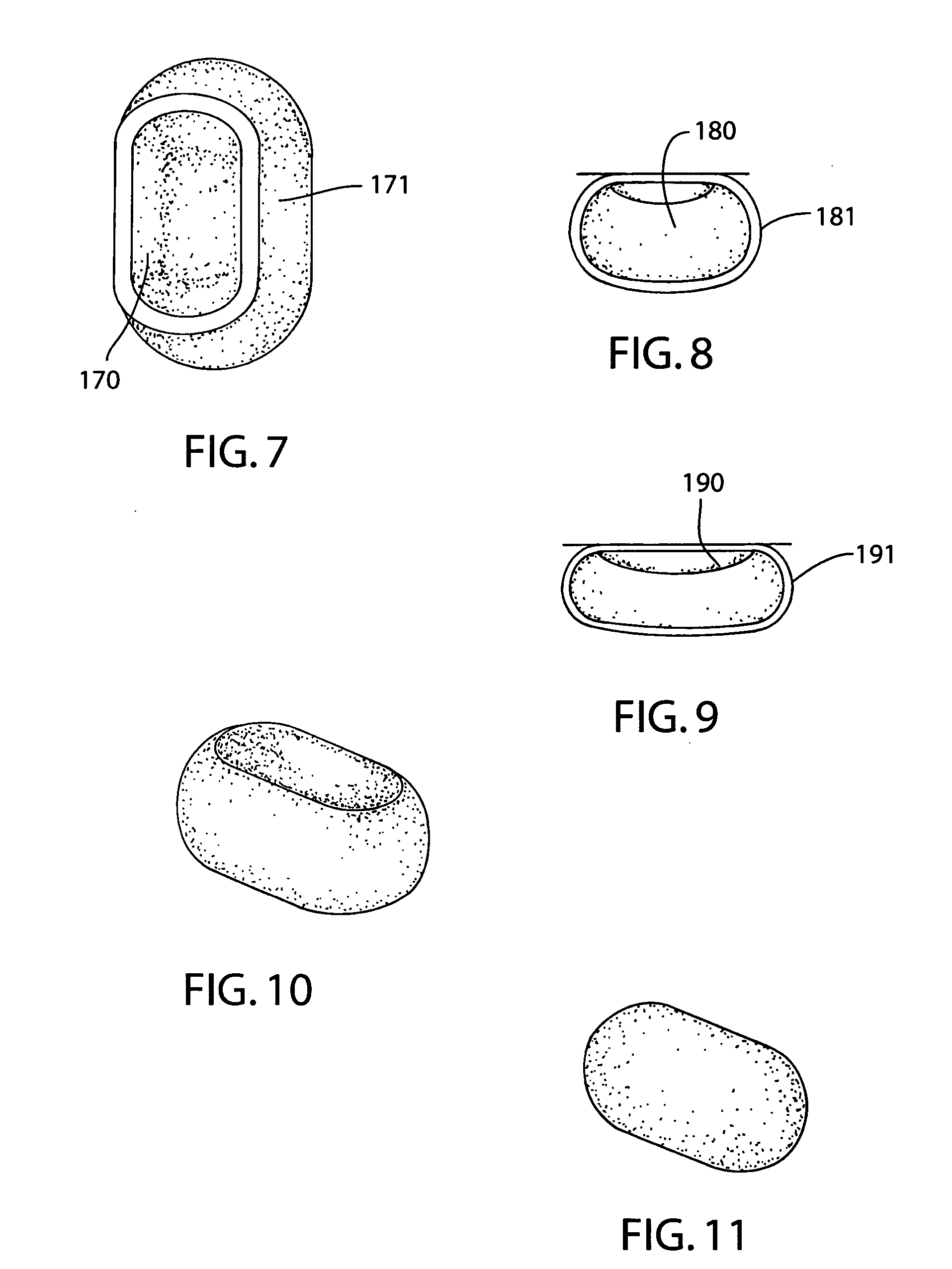Attenuating foam insert and method for manufacture
a technology of foam inserts and earpieces, which is applied in the direction of deaf-aid sets, earpiece/earphone attachments, electrical devices, etc., can solve the problems of increasing high frequency attenuation, exposing users to harmful noise, and virtually unavoidable acoustic leakage between flexible earseals and human heads, so as to improve overall attenuation
- Summary
- Abstract
- Description
- Claims
- Application Information
AI Technical Summary
Benefits of technology
Problems solved by technology
Method used
Image
Examples
Embodiment Construction
[0038] Embodiments of the present invention provide an acoustic foam insert that improves overall attenuation without interfering with the user, that can be shaped to conform to the three-dimensional contours of the earcup, and that can be manufactured simply and reliably.
[0039]FIG. 7 illustrates an isometric view of an earcup 171 with the three-dimensional foam insert 170 inside. FIGS. 8 and 9 illustrate cross sectional views of the earcup 181, 191 with the new foam insert 180, 190 inside. The open cell foam is first cut to have the same exterior dimensions as the interior dimensions of the earcup. An isometric view of the foam is illustrated in FIG. 11. Because the foam is flexible, it can be compressed to fit through the hole in the earcup. Typically the hole to the interior of the earcup is smaller than the largest interior dimension of the earcup to result in a small projected surface area on the ear and a large cup interior volume.
[0040] The foam is first die cut from a sing...
PUM
 Login to View More
Login to View More Abstract
Description
Claims
Application Information
 Login to View More
Login to View More - R&D
- Intellectual Property
- Life Sciences
- Materials
- Tech Scout
- Unparalleled Data Quality
- Higher Quality Content
- 60% Fewer Hallucinations
Browse by: Latest US Patents, China's latest patents, Technical Efficacy Thesaurus, Application Domain, Technology Topic, Popular Technical Reports.
© 2025 PatSnap. All rights reserved.Legal|Privacy policy|Modern Slavery Act Transparency Statement|Sitemap|About US| Contact US: help@patsnap.com



